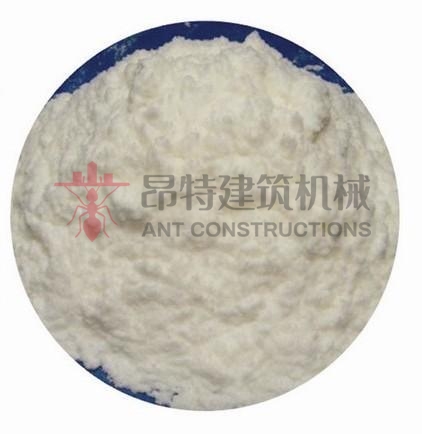Wood HPMC cellulose application in the dry mix mortar products
Author:ANT CONSTRUCTIONS Comefrom: Createdate:2020/11/18 10:51:12 Hits:98
Wood HPMC cellulose application in the dry mix mortar products

Wood HPMC cellulose application in Building waterproof:
Fiber mortar can effectively make up for the technical performance defects of modern engineering technology innovation application and development such as structural self-waterproofing and roofing engineering.
Wood HPMC cellulose application in Grout:
Excellent water retention, which can extend the opening time and improve work efficiency. High lubricity, making application easier and smoother.
Improve shrinkage resistance and crack resistance, and improve surface quality.
Provide a smooth and uniform texture, and make the bonding surface strong.
Wood HPMC cellulose application in Self-leveling floor materials:
Improve viscosity and can be used as anti-settling additive.
Enhance fluidity and pumpability, thereby improving the efficiency of paving the floor.
Control water retention, thereby greatly reducing cracks and shrinkage.
Wood HPMC cellulose application in Masonry mortar:
Enhance the adhesion to the surface of the masonry. And can enhance the water retention, so that the strength of the mortar can be improved.
Improve lubricity and plasticity, thereby improving construction performance, easier application, saving time
Wood HPMC cellulose application in Cement-based plaster:
Improve the uniformity, make the plaster easier to apply, and improve the anti-sliding ability. Enhance fluidity and pumpability, thereby improving work efficiency.
High water retention, extend the working time of mortar, improve work efficiency, and help mortar to form high mechanical strength during solidification.
Control the infiltration of air to eliminate the micro-cracks of the coating and form an ideal smooth surface.
Wood HPMC cellulose application in wall mortar surface layer:
Fiber plastering mortar is applied to the surface layer of the wall, which can effectively prevent the occurrence of wall cracking and achieve the effect of crack resistance and seepage prevention.
Fiber mortar surface has good construction and finishing operation characteristics. It has no effect on the appearance of the mortar surface layer.
Fiber can make up for the technical defects of new lightweight wall materials to the greatest extent. Various light-weight energy-saving wall materials have defects of surface cracking and insufficient impermeability, while using these wall materials, companion fiber mortar is used as a plastering surface layer. It can fully compensate for its performance defects and help improve the quality of the project.
Wood HPMC cellulose application in Gypsum-based plaster and gypsum products:
Improve the uniformity, make the plaster easier to coat, and improve the anti-sagging ability. Enhance fluidity and pumpability, thereby improving work efficiency.
High water retention, extending the working time of the mortar, and forming high mechanical strength during solidification.
Wood HPMC cellulose application in Thermal insulation mortar base layer:
Fiber mortar makes the base layer of mortar firm and tidy, beautiful and smooth, suitable for all kinds of architectural coatings. The increasingly extensive engineering application of various exterior wall coatings puts forward higher requirements for construction mortar. Fiber mortar has good crack resistance, impact resistance and frost resistance. It can greatly improve its engineering characteristics to meet the requirements of construction technology. All requirements and fundamentally guarantee the quality of construction.
Improve the efficiency of plastering construction and reduce losses. Fiber mortar is better than pure cement mortar due to its cohesiveness and stability. It is easy to apply fly ash during plastering construction and the slow mortar drop is greatly reduced, which can improve the efficiency of plastering and reduce material loss.
It is helpful to ensure the construction quality of facing brick surface. The use of fiber mortar as the base layer plays an extremely important role in ensuring the bonding strength of the facing bricks and preventing the occurrence of cracks and hollowing due to the reduction or disappearance of the cracking phenomenon.
We are able to design the best possible process for supplying the customers’ needs. Ant Construction Machinery technology gives our customers several competitive advantages compared to utilizing other technologies.
· Dosing is faster, more accurate, and more repeatable than with traditional techniques
· Better dosing accuracy - higher quality end product and significantly reduced need for expensive additives
· Reduced operating costs
· Less waste thanks to reliable weighing and dosing techniques
· Significant energy savings in dosing using gravity
· A healthier and safer work environment







